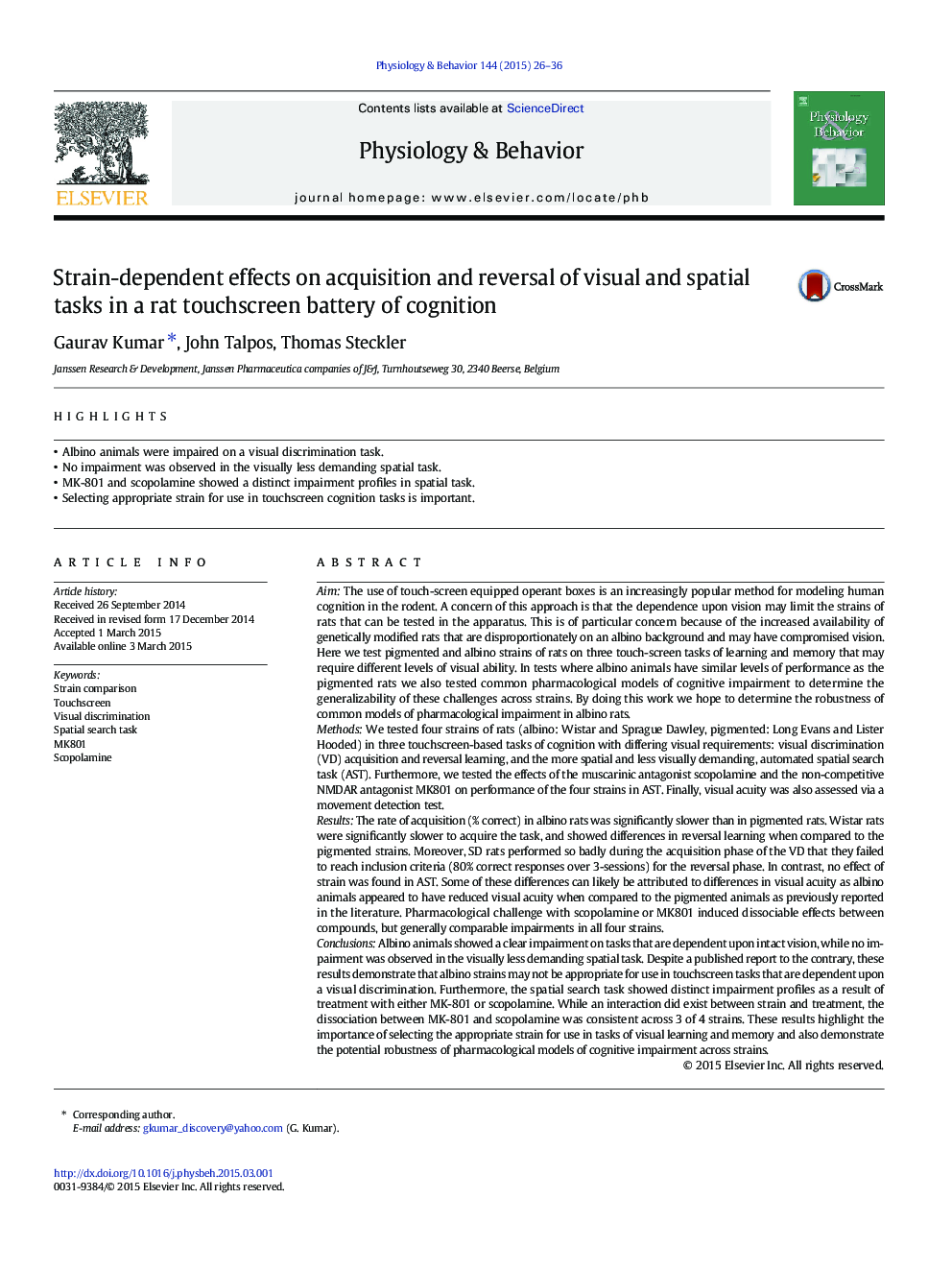| Article ID | Journal | Published Year | Pages | File Type |
|---|---|---|---|---|
| 5923631 | Physiology & Behavior | 2015 | 11 Pages |
â¢Albino animals were impaired on a visual discrimination task.â¢No impairment was observed in the visually less demanding spatial task.â¢MK-801 and scopolamine showed a distinct impairment profiles in spatial task.â¢Selecting appropriate strain for use in touchscreen cognition tasks is important.
AimThe use of touch-screen equipped operant boxes is an increasingly popular method for modeling human cognition in the rodent. A concern of this approach is that the dependence upon vision may limit the strains of rats that can be tested in the apparatus. This is of particular concern because of the increased availability of genetically modified rats that are disproportionately on an albino background and may have compromised vision. Here we test pigmented and albino strains of rats on three touch-screen tasks of learning and memory that may require different levels of visual ability. In tests where albino animals have similar levels of performance as the pigmented rats we also tested common pharmacological models of cognitive impairment to determine the generalizability of these challenges across strains. By doing this work we hope to determine the robustness of common models of pharmacological impairment in albino rats.MethodsWe tested four strains of rats (albino: Wistar and Sprague Dawley, pigmented: Long Evans and Lister Hooded) in three touchscreen-based tasks of cognition with differing visual requirements: visual discrimination (VD) acquisition and reversal learning, and the more spatial and less visually demanding, automated spatial search task (AST). Furthermore, we tested the effects of the muscarinic antagonist scopolamine and the non-competitive NMDAR antagonist MK801 on performance of the four strains in AST. Finally, visual acuity was also assessed via a movement detection test.ResultsThe rate of acquisition (% correct) in albino rats was significantly slower than in pigmented rats. Wistar rats were significantly slower to acquire the task, and showed differences in reversal learning when compared to the pigmented strains. Moreover, SD rats performed so badly during the acquisition phase of the VD that they failed to reach inclusion criteria (80% correct responses over 3-sessions) for the reversal phase. In contrast, no effect of strain was found in AST. Some of these differences can likely be attributed to differences in visual acuity as albino animals appeared to have reduced visual acuity when compared to the pigmented animals as previously reported in the literature. Pharmacological challenge with scopolamine or MK801 induced dissociable effects between compounds, but generally comparable impairments in all four strains.ConclusionsAlbino animals showed a clear impairment on tasks that are dependent upon intact vision, while no impairment was observed in the visually less demanding spatial task. Despite a published report to the contrary, these results demonstrate that albino strains may not be appropriate for use in touchscreen tasks that are dependent upon a visual discrimination. Furthermore, the spatial search task showed distinct impairment profiles as a result of treatment with either MK-801 or scopolamine. While an interaction did exist between strain and treatment, the dissociation between MK-801 and scopolamine was consistent across 3 of 4 strains. These results highlight the importance of selecting the appropriate strain for use in tasks of visual learning and memory and also demonstrate the potential robustness of pharmacological models of cognitive impairment across strains.
